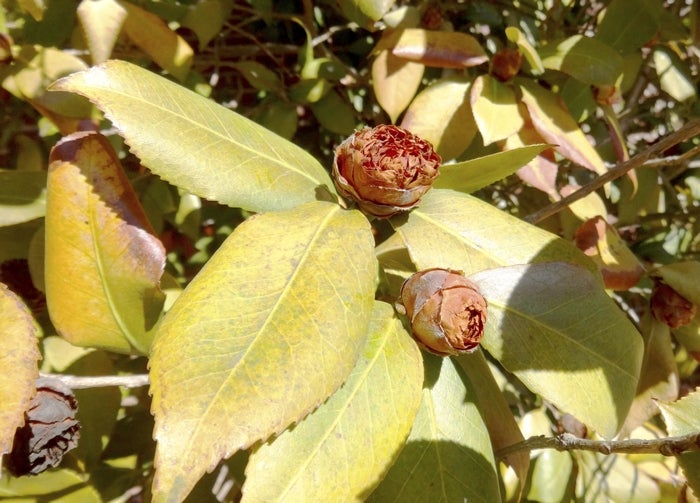Darrell Blackwelder: Be careful how you use pesticide
Published 12:03 am Friday, April 3, 2015

- Cooperative Extension The recent freeze damaged this camellia, as seen in the burned flowers.
The blast of cold weather caught many off guard and cold tender plants were damaged.
Statistically, there are about two more weeks of cold weather before cold-tender plants can be added to gardens and landscapes. But take heed: Our weather is as fickle as ever and cold weather may occur even in May. Below are questions about lawn care and shrubs over the past week.
Question: I want to kill broadleaf weeds in my lawn and was wondering what would be the best herbicide to use for my fescue lawn. A friend of mine told me I could use pasture herbicides and it would kill the same weeds in my lawn. It was really a lot cheaper and it would do a better job on the weeds. However, I couldn’t find the rates to use for my lawn; it only gives me the rates in quarts per acre for pastures and hayfields. How much can I use per gallon on my lawn?
Answer: The herbicide you purchased is labeled for use only on pastures and not residential lawns. It is a label violation and against NC Pesticide Laws to use any pesticide regardless of how safe it may be that is not labeled for that use. Always read the label before applying any pesticide. In other words, the herbicide is labeled to use for killing weeds in pastures and not for home lawns. that’s why you couldn’t find a rate on the label for lawns.
Question: My hydrangeas got killed back during the freeze last week and I need to know when the best time to cut them back is?
Answer: Hydrangeas don’t really need heavy pruning to produce ample flowers. There are four major types of hydrangeas grown in Rowan County and all are pruned differently and at different times. Those killed by the recent freeze with deadwood can be pruned or deadheaded at any time. It’s important to note that severely pruning older varieties will almost assuredly reduce future flower production; the flower buds are produced on the old growth.
Newer “Endless Summer” cultivars produce blooms on both new and old growth, so they can be pruned in the spring and summer. However, if your older “mop head” type hydrangea is getting much too large you may consider light, judicious pruning. Prune hydrangeas only in the mid-summer before August. Pruning older hydrangeas into August is risky because they most likely have already set their bloom buds for the next year. If those stems are pruned in the fall, winter or spring, the bloom buds will be removed, and there can be little or no bloom that year. Go to http://www.hydrangeashydrangeas.com/pruning.html for detailed information on pruning hydrangeas.
Darrell Blackwelder is the county Extension director in Rowan County with horticulture responsibilities with the North Carolina Cooperative Extension Service. Learn more about Cooperative Extension events and activities by calling 704-216-8970, Facebook or online at www.rowanextension.com




